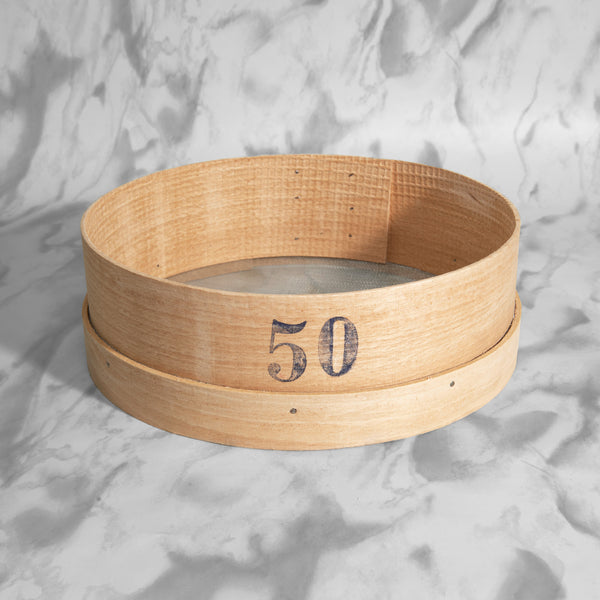THIS IS AN ARCHIVE OF EVERYTHING KIOSK HAS COLLECTED. TO MEET THE DIGITAL, WE HAVE A PHYSICAL, CURRENTLY IN STORAGE IN NEW YORK. NOTHING YOU SEE HERE IS FOR SALE. PLEASE USE AS A REFERENCE AND AN INSPIRATION AND PLEASE WRITE US IF YOU HAVE ANY QUESTIONS OR INFORMATION TO SHARE.

Greek Sifter
9"ø x 3"
Wood & Metal
GREECE
I was wondering why we were seeing sifters used in so many contexts in Greece, and then it dawned on me: archeological sites, a plethora of them, and what is one of the most common tools at such? A sifter, naturally. Take the archeological digs and add on ceramic production. The first step in making most Greek pottery is the dirt gets sifted for stone before being used. Looking through vintage images of ceramic production, what do you commonly see? A large sifter. With all this in mind, it makes sense the sifter would become one of the more common tools in both hardware and kitchen stores alike. You may notice the number 50 displayed prominently on the side of this sieve or sifter as we call it (same thing but applied in different contexts). I have no idea what it indicates. I thought diameter, circumference? Neither. I can't imagine this is number 50 in a succession of sifters on offer - that would be a multitude of sizes. Speaking of different contexts, Danielle told me her Greek grandmother used to place tarts on an identical sifter to cool, and then, later, used the sifter to dust the top with powdered sugar. Thinking about powdered sugar, it kind of resembles a fine powder or sifted dirt. A full circle indeed, like this sifter, made from one piece of wood.